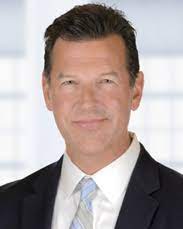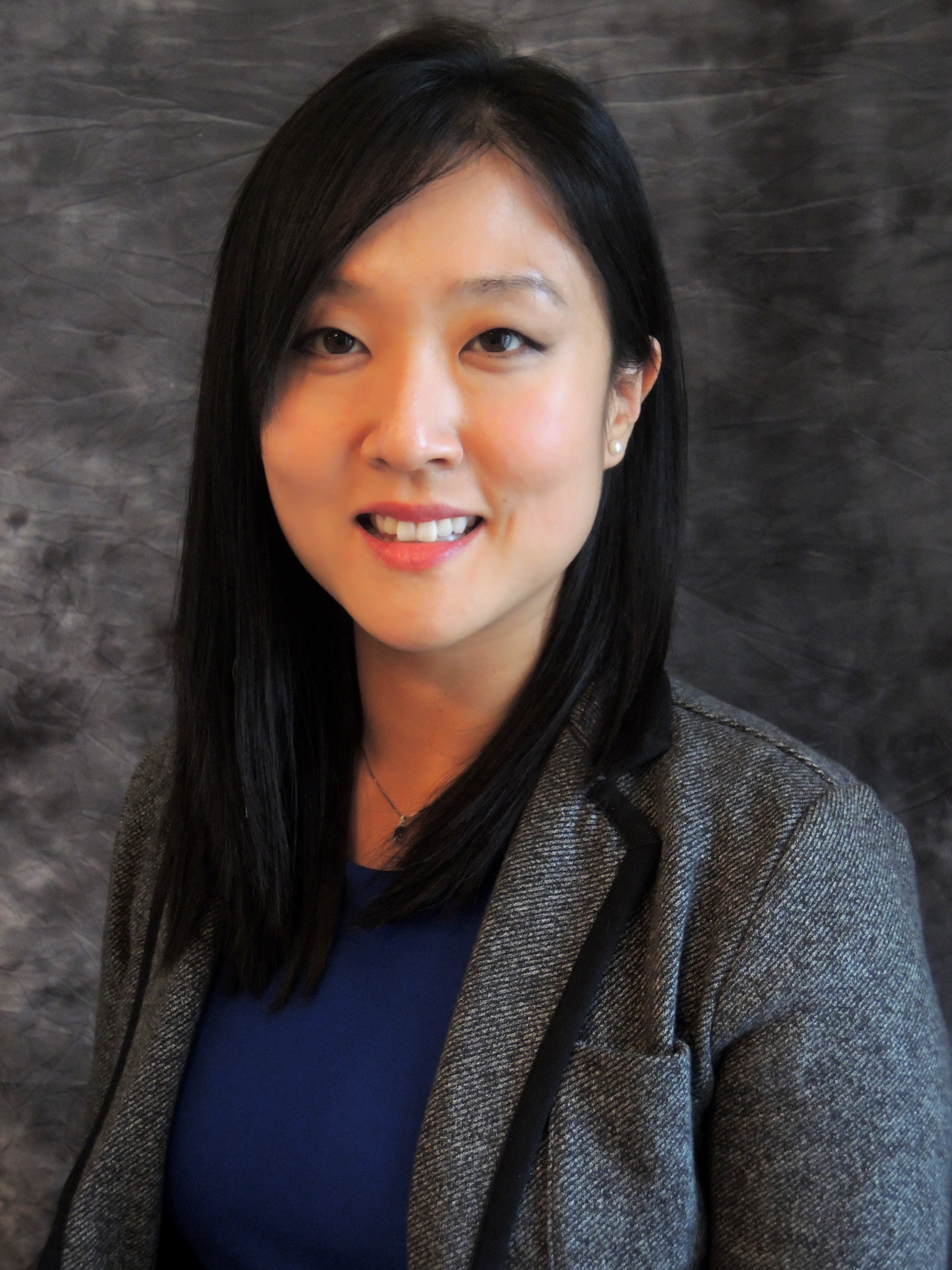Tracks/Sessions
Track 01: Ophthalmic Surgery
Ophthalmic surgery, a specialized branch of surgery, focuses on diagnosing and treating eye conditions through surgical interventions. It encompasses various procedures aimed at correcting vision problems, treating eye diseases, and improving ocular health. Common ophthalmic surgeries include cataract surgery, refractive surgery, glaucoma surgery, and retinal surgery. These procedures are performed by skilled ophthalmic surgeons using advanced techniques and equipment to restore or enhance vision and alleviate ocular discomfort.
Related Conferences: Ophthalmology Conferences 2024 | Ophthalmology Congress | ophthalmology Physical Conferences|Scientific Conferences on Ophthalmology | ophthalmology & optometry Congress 2024 | Ophthalmology and optometry 2024 | Ophthalmology Summit 2024 | Glaucoma Treatment Conferences 2024 | Ophthalmology Events | Ophthalmology Conferences 2024 | optometry
American Academy of Ophthalmology (AAO)| European Society of Ophthalmology (SOE)| Asia-Pacific Academy of Ophthalmology (APAO)| International Council of Ophthalmology (ICO)| Japanese Ophthalmological Society (JOS)| World Glaucoma Association (WGA)| International Agency for the Prevention of Blindness (IAPB)|
Track 02: Vision disorders
Vision disorders encompass a range of conditions affecting the eyes and visual system, leading to impaired eyesight. These disorders may include refractive errors like myopia, hyperopia, astigmatism, and presbyopia, as well as eye conditions such as glaucoma, cataracts, macular degeneration, and diabetic retinopathy. Vision disorders can impact the clarity and sharpness of vision, causing visual discomfort and, if left untreated, potentially leading to significant vision loss. Regular eye examinations and timely intervention are essential for managing vision disorders and preserving optimal eye health.
Related Conferences: Ophthalmology Conferences 2024 | Ophthalmology Congress | ophthalmology Physical Conferences | Scientific Conferences on Ophthalmology | ophthalmology & optometry Congress 2024 | Ophthalmology and optometry 2024 | Ophthalmology Summit 2024 | Glaucoma Treatment Conferences 2024 | Ophthalmology Events | Ophthalmology Conferences 2024 | optometry
American Academy of Ophthalmology (AAO)| European Society of Ophthalmology (SOE)| Asia-Pacific Academy of Ophthalmology (APAO)| International Council of Ophthalmology (ICO)| Japanese Ophthalmological Society (JOS)| World Glaucoma Association (WGA)| International Agency for the Prevention of Blindness (IAPB)|
Track 03: Retinal diseases
Retinal diseases encompass a spectrum of conditions affecting the retina, the light-sensitive tissue lining the back of the eye. These diseases include age-related macular degeneration (AMD), diabetic retinopathy, retinal detachment, and retinitis pigmentosa, among others. Retinal diseases can lead to vision impairment or even blindness if left untreated, often causing symptoms like blurred vision, floaters, or loss of peripheral vision. Early detection through regular eye examinations and timely intervention are crucial for managing retinal diseases and preserving visual function. Treatment options may include medications, laser therapy, or surgical procedures, depending on the specific condition and its severity.
Related Conferences: Ophthalmology Conferences 2024 | Ophthalmology Congress | ophthalmology Physical Conferences | Scientific Conferences on Ophthalmology | ophthalmology & optometry Congress 2024 | Ophthalmology and optometry 2024 | Ophthalmology Summit 2024 | Glaucoma Treatment Conferences 2024 | Ophthalmology Events | Ophthalmology Conferences 2024 | optometry
American Academy of Ophthalmology (AAO)| European Society of Ophthalmology (SOE)| Asia-Pacific Academy of Ophthalmology (APAO)| International Council of Ophthalmology (ICO)| Japanese Ophthalmological Society (JOS)| World Glaucoma Association (WGA)| International Agency for the Prevention of Blindness (IAPB)|
Track 04: Glaucoma Treatment
Glaucoma treatment aims to manage intraocular pressure (IOP) to prevent optic nerve damage and vision loss. Therapeutic approaches include medications such as eye drops, oral medications, or surgical procedures like laser trabeculoplasty or trabeculectomy. The goal is to reduce IOP by improving aqueous humour outflow or decreasing its production. Early diagnosis and adherence to treatment regimens are essential to slow disease progression and preserve vision in patients with glaucoma. Regular monitoring by an ophthalmologist is crucial to adjust treatment as needed and maintain optimal ocular health.
Related Conferences: Ophthalmology Conferences 2024 | Ophthalmology Congress | ophthalmology Physical Conferences | Scientific Conferences on Ophthalmology | ophthalmology & optometry Congress 2024 | Ophthalmology and optometry 2024 | Ophthalmology Summit 2024 | Glaucoma Treatment Conferences 2024 | Ophthalmology Events | Ophthalmology Conferences 2024 | optometry
American Academy of Ophthalmology (AAO)| European Society of Ophthalmology (SOE)| Asia-Pacific Academy of Ophthalmology (APAO)| International Council of Ophthalmology (ICO)| Japanese Ophthalmological Society (JOS)| World Glaucoma Association (WGA)| International Agency for the Prevention of Blindness (IAPB)|
Track 05: Cataract Surgery
Cataract surgery is a common procedure to remove a cloudy lens from the eye and replace it with a clear artificial lens. It's usually done as an outpatient procedure, where a small cut is made in the eye to remove the cloudy lens using ultrasound or laser. After removal, a clear lens is inserted to restore vision. The surgery is safe, with few complications, and most patients see better after it. It's one of the most common surgeries worldwide and is considered routine by eye doctors.
Related Conferences: Ophthalmology Conferences 2024 | Ophthalmology Congress | ophthalmology Physical Conferences | Scientific Conferences on Ophthalmology | ophthalmology & optometry Congress 2024 | Ophthalmology and optometry 2024 | Ophthalmology Summit 2024 | Glaucoma Treatment Conferences 2024 | Ophthalmology Events | Ophthalmology Conferences 2024 | optometry
American Academy of Ophthalmology (AAO)| European Society of Ophthalmology (SOE)| Asia-Pacific Academy of Ophthalmology (APAO)| International Council of Ophthalmology (ICO)| Japanese Ophthalmological Society (JOS)| World Glaucoma Association (WGA)| International Agency for the Prevention of Blindness (IAPB)|
Track 06: Corneal Transplantation
Corneal transplantation, also known as corneal grafting, is a surgical procedure to replace damaged or diseased corneal tissue with healthy donor tissue. It is typically performed to restore vision in individuals with corneal scarring, thinning, or irregularities caused by conditions such as keratoconus, corneal dystrophy, or corneal injury. During the procedure, the surgeon removes the damaged portion of the cornea and replaces it with a clear corneal tissue graft obtained from a donor. Corneal transplantation can improve visual acuity and alleviate symptoms such as blurred vision, glare, and discomfort, ultimately enhancing the patient's quality of life. With advancements in surgical techniques and tissue preservation methods, corneal transplantation has become a widely performed and successful treatment option for various corneal disorders.
Related Conferences: Ophthalmology Conferences 2024 | Ophthalmology Congress | ophthalmology Physical Conferences | Scientific Conferences on Ophthalmology | ophthalmology & optometry Congress 2024 | Ophthalmology and optometry 2024 | Ophthalmology Summit 2024 | Glaucoma Treatment Conferences 2024 | Ophthalmology Events | Ophthalmology Conferences 2024 | optometry
American Academy of Ophthalmology (AAO)| European Society of Ophthalmology (SOE)| Asia-Pacific Academy of Ophthalmology (APAO)| International Council of Ophthalmology (ICO)| Japanese Ophthalmological Society (JOS)| World Glaucoma Association (WGA)| International Agency for the Prevention of Blindness (IAPB)|
Track 07: Refractive Surgery
Refractive surgery is a surgical procedure aimed at correcting vision problems such as nearsightedness (myopia), farsightedness (hyperopia), and astigmatism. It involves reshaping the cornea or lens of the eye to improve the focusing ability and reduce the need for corrective eyewear like glasses or contact lenses. Common types of refractive surgery include LASIK (Laser-Assisted In Situ Keratomileusis), PRK (Photorefractive Keratectomy), and SMILE (Small Incision Lenticule Extraction). Refractive surgery offers the potential for long-term vision improvement and increased independence from visual aids, making it a popular choice for individuals seeking vision correction.
Related Conferences: Ophthalmology Conferences 2024 | Ophthalmology Congress | ophthalmology Physical Conferences | Scientific Conferences on Ophthalmology | ophthalmology & optometry Congress 2024 | Ophthalmology and optometry 2024 | Ophthalmology Summit 2024 | Glaucoma Treatment Conferences 2024 | Ophthalmology Events | Ophthalmology Conferences 2024 | optometry
American Academy of Ophthalmology (AAO)| European Society of Ophthalmology (SOE)| Asia-Pacific Academy of Ophthalmology (APAO)| International Council of Ophthalmology (ICO)| Japanese Ophthalmological Society (JOS)| World Glaucoma Association (WGA)| International Agency for the Prevention of Blindness (IAPB)|
Track 08: Paediatric Ophthalmology
Paediatric ophthalmology is a specialized field focusing on the eye health and vision care of infants, children, and adolescents. It addresses a wide range of conditions unique to this age group, including amblyopia (lazy eye), strabismus (crossed eyes), congenital eye disorders, and refractive errors. Paediatric ophthalmologists undergo additional training to diagnose and manage these conditions, often employing specialized techniques and equipment tailored to young patients. Early detection and treatment are crucial in paediatric ophthalmology to ensure optimal visual development and prevent long-term vision problems.
Related Conferences: Ophthalmology Conferences 2024 | Ophthalmology Congress | ophthalmology Physical Conferences | Scientific Conferences on Ophthalmology | ophthalmology & optometry Congress 2024 | Ophthalmology and optometry 2024 | Ophthalmology Summit 2024 | Glaucoma Treatment Conferences 2024 | Ophthalmology Events | Ophthalmology Conferences 2024 | optometry
American Academy of Ophthalmology (AAO)| European Society of Ophthalmology (SOE)| Asia-Pacific Academy of Ophthalmology (APAO)| International Council of Ophthalmology (ICO)| Japanese Ophthalmological Society (JOS)| World Glaucoma Association (WGA)| International Agency for the Prevention of Blindness (IAPB)|
Track 09: Ocular Oncology
Ocular oncology is a subspecialty of ophthalmology that focuses on the diagnosis and treatment of tumors affecting the eye and surrounding structures. These tumors can be benign or malignant and may arise from various tissues, including the retina, choroid, iris, and eyelids. Ocular oncologists utilize a combination of imaging techniques, such as ultrasound and optical coherence tomography, along with biopsy and surgical interventions to diagnose and manage ocular tumors. Treatment options may include laser therapy, cryotherapy, radiation therapy, chemotherapy, or surgical removal, depending on the type, size, and location of the tumor. Early detection and prompt intervention are crucial in ocular oncology to preserve vision and prevent metastasis to other parts of the body.
Related Conferences: Ophthalmology Conferences 2024 | Ophthalmology Congress | ophthalmology Physical Conferences | Scientific Conferences on Ophthalmology | ophthalmology & optometry Congress 2024 | Ophthalmology and optometry 2024 | Ophthalmology Summit 2024 | Glaucoma Treatment Conferences 2024 | Ophthalmology Events | Ophthalmology Conferences 2024 | optometry
American Academy of Ophthalmology (AAO)| European Society of Ophthalmology (SOE)| Asia-Pacific Academy of Ophthalmology (APAO)| International Council of Ophthalmology (ICO)| Japanese Ophthalmological Society (JOS)| World Glaucoma Association (WGA)| International Agency for the Prevention of Blindness (IAPB)|
Track 10: Optic Nerve Disorders
Optic nerve disorders encompass a range of conditions affecting the optic nerve, which transmits visual information from the eye to the brain. These disorders may result from various causes, including trauma, inflammation, vascular issues, tumours, and degenerative diseases like glaucoma. Symptoms can include vision loss, visual field defects, changes in colour perception, and optic nerve head abnormalities. Diagnosis typically involves a comprehensive eye examination, visual field testing, imaging studies such as optical coherence tomography (OCT), and sometimes lumbar puncture for cerebrospinal fluid analysis. Treatment depends on the underlying cause and may include medications, surgery, or management of associated conditions to preserve visual function and prevent further damage to the optic nerve.
Related Conferences: Ophthalmology Conferences 2024 | Ophthalmology Congress | ophthalmology Physical Conferences | Scientific Conferences on Ophthalmology | ophthalmology & optometry Congress 2024 | Ophthalmology and optometry 2024 | Ophthalmology Summit 2024 | Glaucoma Treatment Conferences 2024 | Ophthalmology Events | Ophthalmology Conferences 2024 | optometry
American Academy of Ophthalmology (AAO)| European Society of Ophthalmology (SOE)| Asia-Pacific Academy of Ophthalmology (APAO)| International Council of Ophthalmology (ICO)| Japanese Ophthalmological Society (JOS)| World Glaucoma Association (WGA)| International Agency for the Prevention of Blindness (IAPB)|
Track 11 : Ophthalmic Genetics and Genomics
Ophthalmic Genetics and Genomics, a specialized field in ophthalmology, explores genetic factors impacting eye health. It investigates genetic mechanisms in inherited eye diseases, congenital abnormalities, and susceptibility to ocular disorders. Researchers analyze specific genes, mutations, and genomic variations, providing insights for personalized medicine in diagnosing, treating, and preventing hereditary eye conditions.
Related ConferencesAmerican Academy of Ophthalmology (AAO)| European Society of Ophthalmology (SOE)| Asia-Pacific Academy of Ophthalmology (APAO)| International Council of Ophthalmology (ICO)| Japanese Ophthalmological Society (JOS)| World Glaucoma Association (WGA)| International Agency for the Prevention of Blindness (IAPB)|: Ophthalmology Conferences 2024 | Ophthalmology Congress | ophthalmology Physical Conferences | Scientific Conferences on Ophthalmology | ophthalmology & optometry Congress 2024 | Ophthalmology and optometry 2024 | Ophthalmology Summit 2024 | Glaucoma Treatment Conferences 2024 | Ophthalmology Events | Ophthalmology Conferences 2024 | optometry
Track 12 : Dry Eye Syndrome
Dry Eye Syndrome causes discomfort, irritation, and potential eye damage due to an insufficient tear layer. Symptoms include grittiness, burning, redness, and blurred vision. Aging, environment, medications, and health issues contribute. Management includes artificial tears, lifestyle changes, and, in severe cases, medical interventions. Professional eye care is vital for accurate diagnosis and treatment.
Related Conferences: Ophthalmology Conferences 2024 | Ophthalmology Congress | ophthalmology Physical Conferences | Scientific Conferences on Ophthalmology | ophthalmology & optometry Congress 2024 | Ophthalmology and optometry 2024 | Ophthalmology Summit 2024 | Glaucoma Treatment Conferences 2024 | Ophthalmology Events | Ophthalmology Conferences 2024 | optometry
American Academy of Ophthalmology (AAO)| European Society of Ophthalmology (SOE)| Asia-Pacific Academy of Ophthalmology (APAO)| International Council of Ophthalmology (ICO)| Japanese Ophthalmological Society (JOS)| World Glaucoma Association (WGA)| International Agency for the Prevention of Blindness (IAPB)|
Track 13: Optical Coherence Tomography (OCT)
Optical Coherence Tomography (OCT) is a non-invasive ophthalmic imaging technique, offering high-resolution cross-sectional images of the eye's internal structures. Utilizing low-coherence interferometry, OCT aids in diagnosing conditions like macular degeneration, glaucoma, and diabetic retinopathy. It assesses retinal thickness, detects abnormalities, and monitors treatment effectiveness, playing a pivotal role in advancing eye care.
Related Conferences: Ophthalmology Conferences 2024 | Ophthalmology Congress | ophthalmology Physical Conferences | Scientific Conferences on Ophthalmology | ophthalmology & optometry Congress 2024 | Ophthalmology and optometry 2024 | Ophthalmology Summit 2024 | Glaucoma Treatment Conferences 2024 | Ophthalmology Events | Ophthalmology Conferences 2024 | optometry
American Academy of Ophthalmology (AAO)| European Society of Ophthalmology (SOE)| Asia-Pacific Academy of Ophthalmology (APAO)| International Council of Ophthalmology (ICO)| Japanese Ophthalmological Society (JOS)| World Glaucoma Association (WGA)| International Agency for the Prevention of Blindness (IAPB)|
Track 14: Contact Lenses and Anterior Segment Optometry
Contact Lenses and Anterior Segment Optometry focus on the fitting and management of contact lenses, particularly those designed for the front part of the eye, known as the anterior segment. Optometrists specializing in this field assess the cornea, conjunctiva, and related structures to prescribe and manage various types of contact lenses. They consider factors like refractive error, corneal health, and individual patient needs. Contact lenses for astigmatism, presbyopia, and specialty lenses fall within this domain. Regular follow-ups and proper care are essential for optimal vision and eye health with contact lenses.
Related Conferences: Ophthalmology Conferences 2024 | Ophthalmology Congress | ophthalmology Physical Conferences | Scientific Conferences on Ophthalmology | ophthalmology & optometry Congress 2024 | Ophthalmology and optometry 2024 | Ophthalmology Summit 2024 | Glaucoma Treatment Conferences 2024 | Ophthalmology Events | Ophthalmology Conferences 2024 | optometry
American Academy of Ophthalmology (AAO)| European Society of Ophthalmology (SOE)| Asia-Pacific Academy of Ophthalmology (APAO)| International Council of Ophthalmology (ICO)| Japanese Ophthalmological Society (JOS)| World Glaucoma Association (WGA)| International Agency for the Prevention of Blindness (IAPB)|
Track 15: Myopia control and management
Myopia control and management involve strategies to slow nearsightedness progression, especially in children. Methods like specialty contact lenses, atropine eye drops, and specific eyeglasses are used to mitigate myopia. The aim is to decrease the risks of associated eye complications and vision impairment. Regular eye exams and professional consultation are crucial for effective management.
Related Conferences: Ophthalmology Conferences 2024 | Ophthalmology Congress | ophthalmology Physical Conferences | Scientific Conferences on Ophthalmology | ophthalmology & optometry Congress 2024 | Ophthalmology and optometry 2024 | Ophthalmology Summit 2024 | Glaucoma Treatment Conferences 2024 | Ophthalmology Events | Ophthalmology Conferences 2024 | optometry
American Academy of Ophthalmology (AAO)| European Society of Ophthalmology (SOE)| Asia-Pacific Academy of Ophthalmology (APAO)| International Council of Ophthalmology (ICO)| Japanese Ophthalmological Society (JOS)| World Glaucoma Association (WGA)| International Agency for the Prevention of Blindness (IAPB)|
Track 16: Macular degeneration
Macular degeneration, also known as age-related macular degeneration (AMD), is a chronic eye disease that primarily affects the macula, the central part of the retina responsible for sharp and central vision. Dry AMD: This is the more common form, characterized by the presence of drusen (yellow deposits) in the macula. It progresses slowly and may lead to central vision loss.Wet AMD: This form involves the growth of abnormal blood vessels beneath the retina, which can leak blood and fluids, causing rapid and severe vision loss.
Related Conferences: Ophthalmology Conferences 2024 | Ophthalmology Congress | ophthalmology Physical Conferences | Scientific Conferences on Ophthalmology | ophthalmology & optometry Congress 2024 | Ophthalmology and optometry 2024 | Ophthalmology Summit 2024 | Glaucoma Treatment Conferences 2024 | Ophthalmology Events | Ophthalmology Conferences 2024 | optometry
Track 17: AdvanceAmerican Academy of Ophthalmology (AAO)| European Society of Ophthalmology (SOE)| Asia-Pacific Academy of Ophthalmology (APAO)| International Council of Ophthalmology (ICO)| Japanese Ophthalmological Society (JOS)| World Glaucoma Association (WGA)| International Agency for the Prevention of Blindness (IAPB)|ments in eye care technology
Advancements in eye care technology have significantly transformed the landscape of ophthalmology, offering new and improved solutions for diagnosis, treatment, and patient care. Cutting-edge imaging technologies, such as Optical Coherence Tomography (OCT) and high-resolution retinal cameras, provide detailed and non-invasive views of the eye's internal structures, aiding in the early detection of conditions like macular degeneration and glaucoma.Additionally, laser technologies, including femtosecond lasers, have revolutionized eye surgeries, enhancing precision and minimizing recovery times for procedures like LASIK (Laser-Assisted In Situ Keratomileusis) and cataract surgery.
Related Conferences: Ophthalmology Conferences 2024 | Ophthalmology Congress | ophthalmology Physical Conferences | Scientific Conferences on Ophthalmology | ophthalmology & optometry Congress 2024 | Ophthalmology and optometry 2024 | Ophthalmology Summit 2024 | Glaucoma Treatment Conferences 2024 | Ophthalmology Events | Ophthalmology Conferences 2024 | optometry
American Academy of Ophthalmology (AAO)| European Society of Ophthalmology (SOE)| Asia-Pacific Academy of Ophthalmology (APAO)| International Council of Ophthalmology (ICO)| Japanese Ophthalmological Society (JOS)| World Glaucoma Association (WGA)| International Agency for the Prevention of Blindness (IAPB)|














